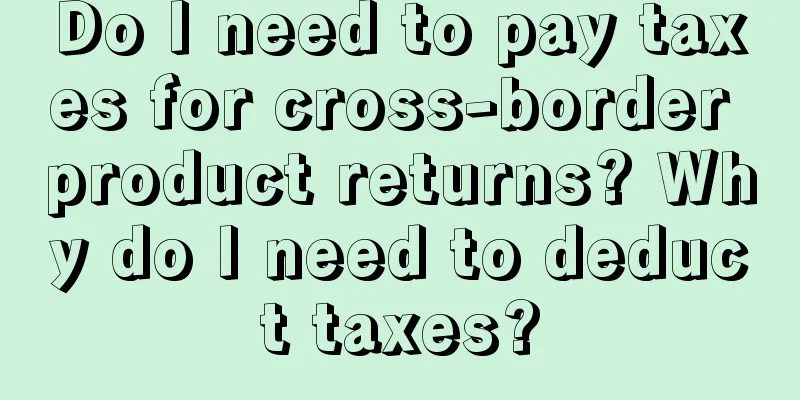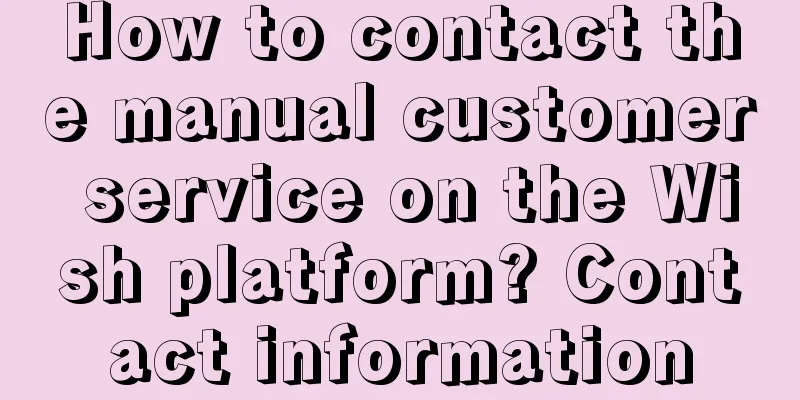Do I need to pay taxes for cross-border product returns? Why do I need to deduct taxes?

|
Buying things or running a store on a cross-border e-commerce platform involves tax issues. Taxes include tariffs, import value-added tax, and consumption tax. Do I need to pay taxes for cross-border product returns? need Why are taxes and fees deducted for cross-border product returns? First of all, from the perspective of cross-border purchase and return regulations, my country has certain regulations on the return policy for cross-border e-commerce sales of goods. According to the "Regulations on the Implementation of the Customs Law of the People's Republic of China", once imported goods are declared and cleared, it means that they have obtained the "free circulation" approved by the customs, and when returning goods, they need to re-declare the customs clearance process. Therefore, if a cross-border purchase is returned, consumers need to bear certain taxes and fees. Secondly, from the perspective of tax calculation, the taxes and fees involved in cross-border purchase returns mainly include two aspects: 1. Tariffs: When consumers shop overseas, they need to pay certain tariffs on imported goods. When the goods are returned overseas, in principle, they need to pay the corresponding tariffs again. However, if the quality of the goods is caused by the merchant or the description is not consistent, the platform will usually bear the full tariff costs. 2. Value-added tax: Value-added tax is a tax paid when domestic goods are sold, but there are many changes in my country's value-added tax policy for cross-border e-commerce sales of imported goods. Usually, the value-added tax and other income taxes involved in cross-border returns will be borne by the consumer. Finally, consumers can adopt the following strategies to deal with the taxes and fees that need to be borne for cross-border purchase returns: 1. Understand the platform's policies: Before making cross-border purchases, consumers should carefully understand the platform's policies, including return policies, tax and fee burden, etc., and try to find a reliable platform for shopping. 2. Understand the product: When shopping across borders, consumers should understand the actual conditions of the product, including quality, specifications, etc., to avoid returning the product because it does not match the description. 3. Communicate with merchants and platforms: When a cross-border return is required, contact and communicate with merchants and platforms immediately to find a better return solution and reduce the taxes and fees that may need to be borne. In summary, cross-border product returns require the payment of taxes and fees. Because cross-border product returns require re-declaration of customs clearance procedures, taxes and fees need to be paid. |
<<: Cross-border e-commerce erp system ranking
>>: What are the standards for free door-to-door collection on Shopee? Introduction to the standards
Recommend
Which country is Lazada a platform from? Detailed introduction
As one of the giants of cross-border e-commerce, L...
Did Jiao Qujing fail in making short videos? How did "Chan Ge" harvest the "elites" of big companies?
This article exposes a person who calls himself &q...
Review of Spring Festival Marketing: Six Major Changes, Anchoring the New Year with a New Atmosphere
What did brands do during the Spring Festival mark...
How to set up an avatar on Shopee? What should I pay attention to?
After registering a Shopee store, you need to make...
TikTok Shop has a new policy, allowing you to quickly settle in and sell goods through short videos, live broadcasts, and product displays!
Recently, TikTok Shop has updated its cross-border...
Is there any risk in registering with Amazon? How much does it cost to register an account?
Amazon is a cross-border e-commerce platform that ...
Dopamine outfit on the left hand, MBTI personality on the right hand, young people who are labeled
Recently, the term "dopamine dressing" h...
What is Amazon AWS? What is Amazon AWS used for?
Now many domestic platforms have launched cloud pl...
How long does it take for eBay to stop posting comments? How to choose products?
There are actually quite a lot of merchants openin...
“Don’t gain weight during the Spring Festival”, whose wallet will be emptied?
As the saying goes, "Every festival makes you...
How to ship goods from Shopify? How to ship goods?
Shopify's business share in China is increasin...
To bosses: Your product is great, but why don’t users buy it?
Stimulating consumers' pain points has always ...
Is PayPal legal in China? How to use it in China?
Everyone should know about PayPal. It is a very po...
Deconstructing the “emotional value” marketing of Xiangpiaopiao and Chabaidao
We are currently in an era of "emotional mark...
Why do reaction videos become popular when foreigners listen to Chinese music?
As reaction videos become more popular, people can...









